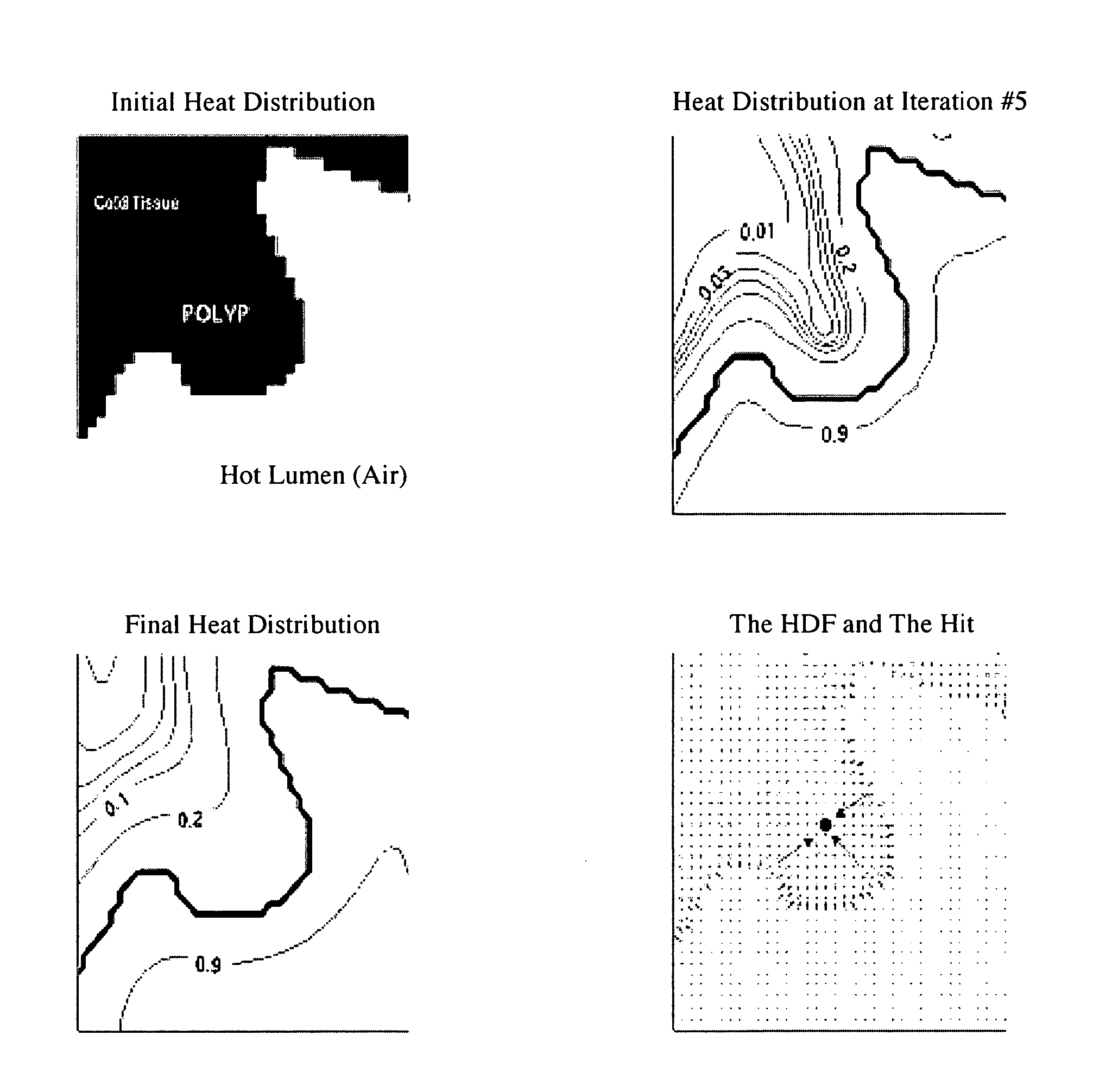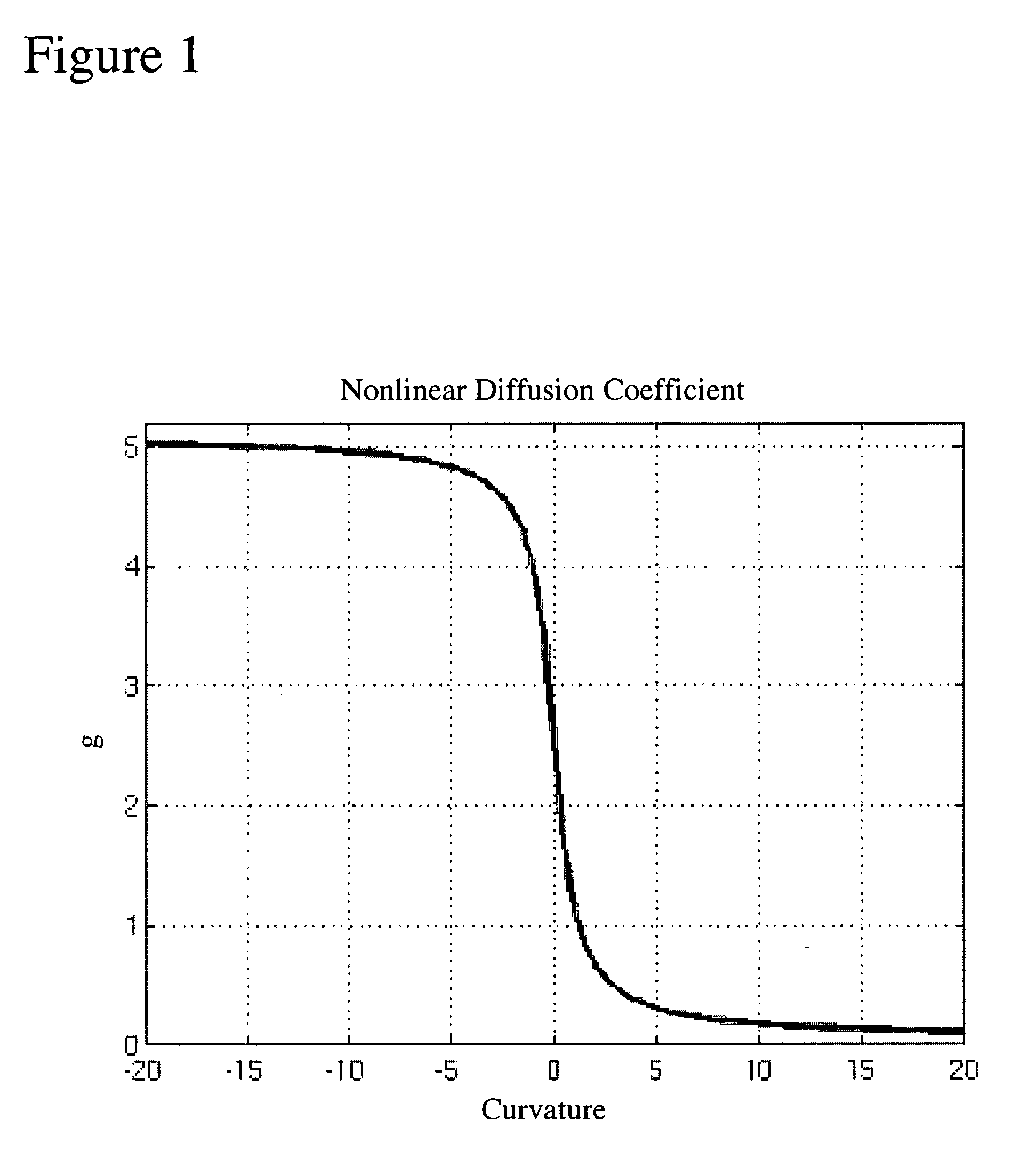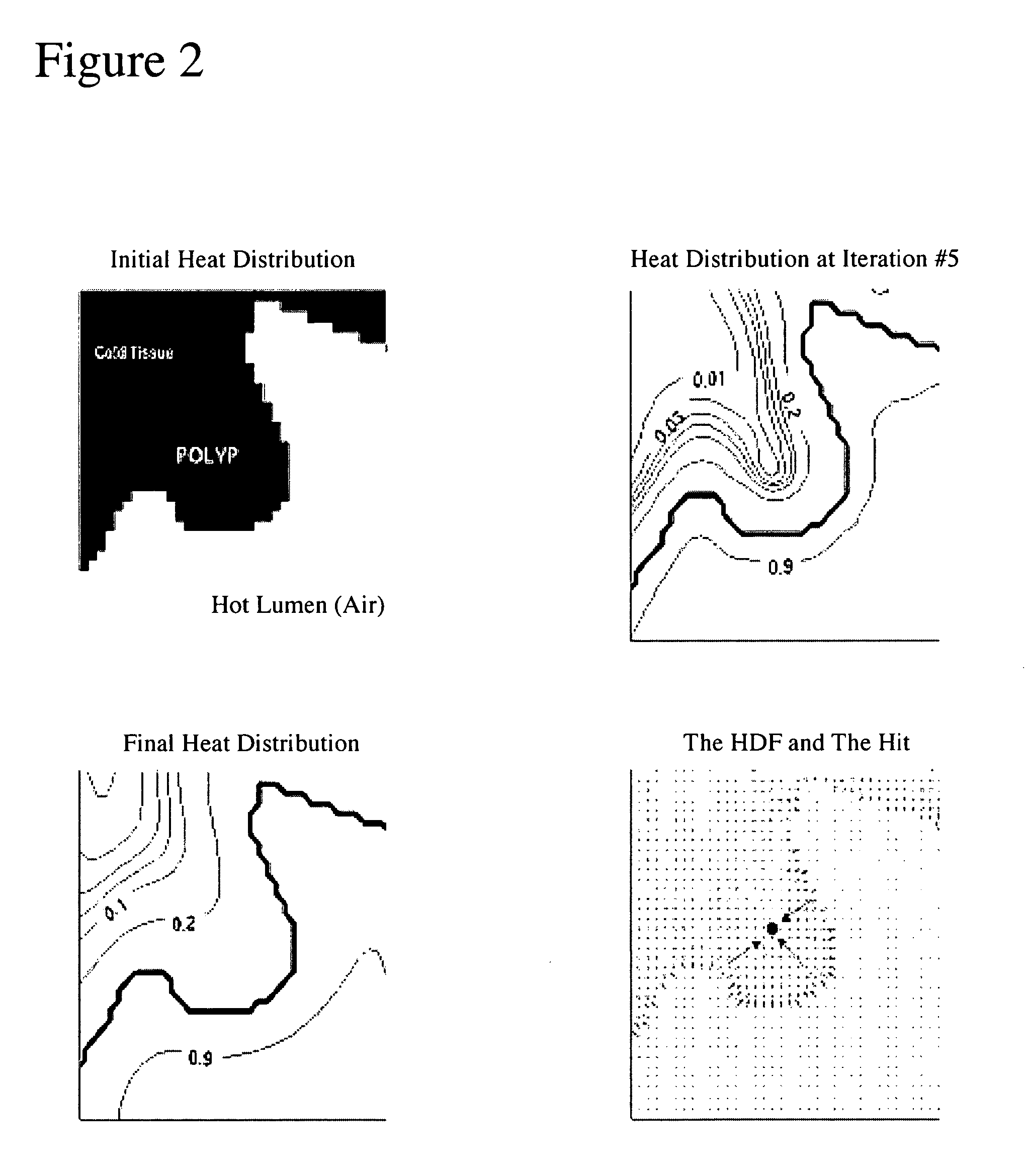Heat diffusion based detection of structures of interest in medical images
a technology of heat diffusion and detection of structures, applied in the field of medical imaging, can solve the problems of unavoidably limited detection accuracy and time-consuming conventional examination of source images
- Summary
- Abstract
- Description
- Claims
- Application Information
AI Technical Summary
Benefits of technology
Problems solved by technology
Method used
Image
Examples
Embodiment Construction
[0014]The present method is aimed at detecting structures of interest from volumetric images and discriminate them from other protruding structures, non-protruding structures and / or stand-alone structures. In an exemplary embodiment, the protruding structures are for instance polyps, haustral folds, etc., whereby the protruding structures of interest are polyps. The non-protruding structures are for instance elongated structures, flat structures or structures in between haustral folds. In this example, both types of structures are on the flexible colon, which is herein considered the volume of interest. In another exemplary embodiment, the structures of interest are stand-alone structures such as lung nodules. In this example, the structures are within a lung, which is then considered the volume of interest. The following description contains details on the first embodiment. However, a person of average skill in the art would readily appreciate that these teachings would also apply ...
PUM
 Login to View More
Login to View More Abstract
Description
Claims
Application Information
 Login to View More
Login to View More - R&D
- Intellectual Property
- Life Sciences
- Materials
- Tech Scout
- Unparalleled Data Quality
- Higher Quality Content
- 60% Fewer Hallucinations
Browse by: Latest US Patents, China's latest patents, Technical Efficacy Thesaurus, Application Domain, Technology Topic, Popular Technical Reports.
© 2025 PatSnap. All rights reserved.Legal|Privacy policy|Modern Slavery Act Transparency Statement|Sitemap|About US| Contact US: help@patsnap.com



